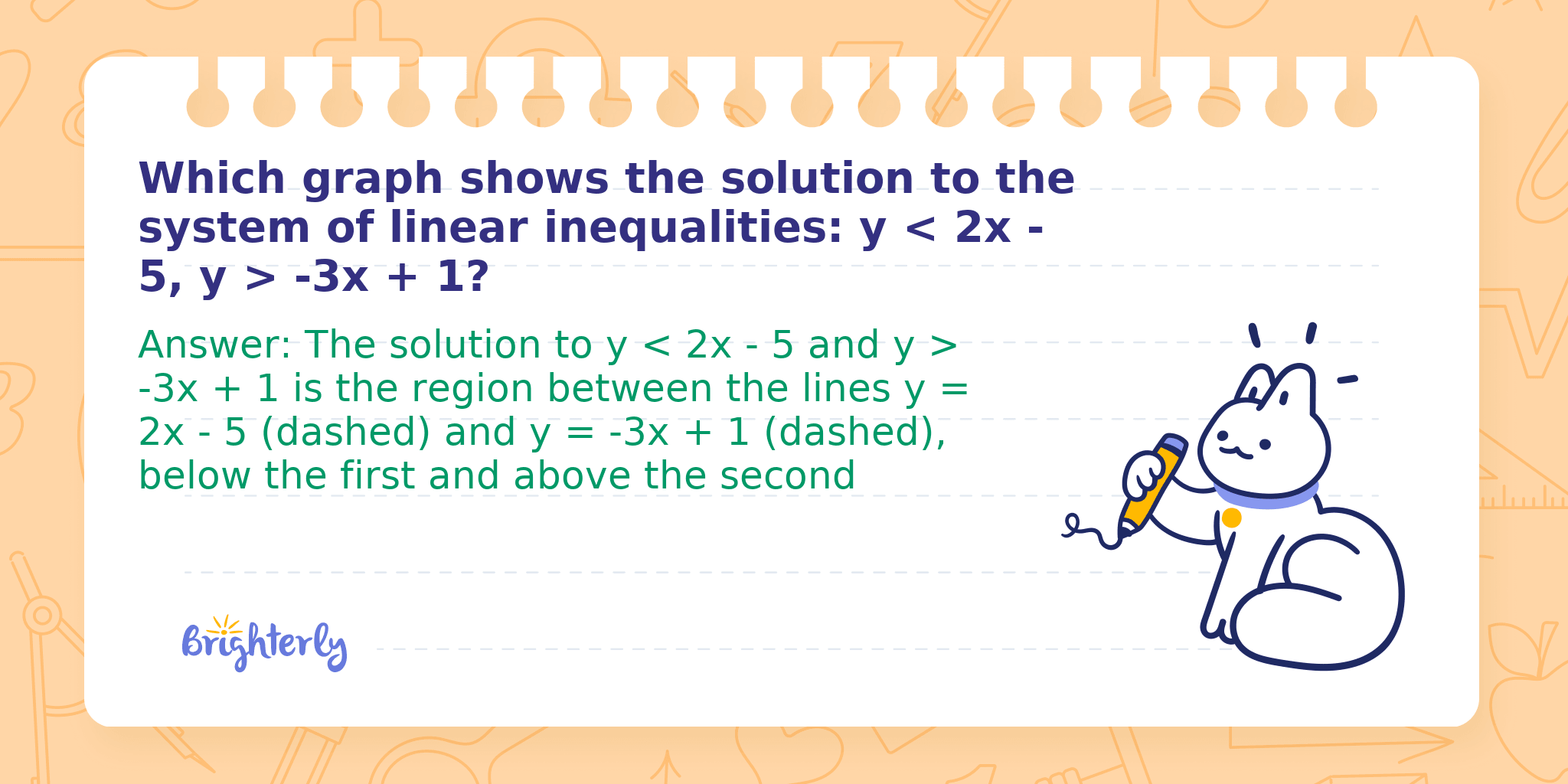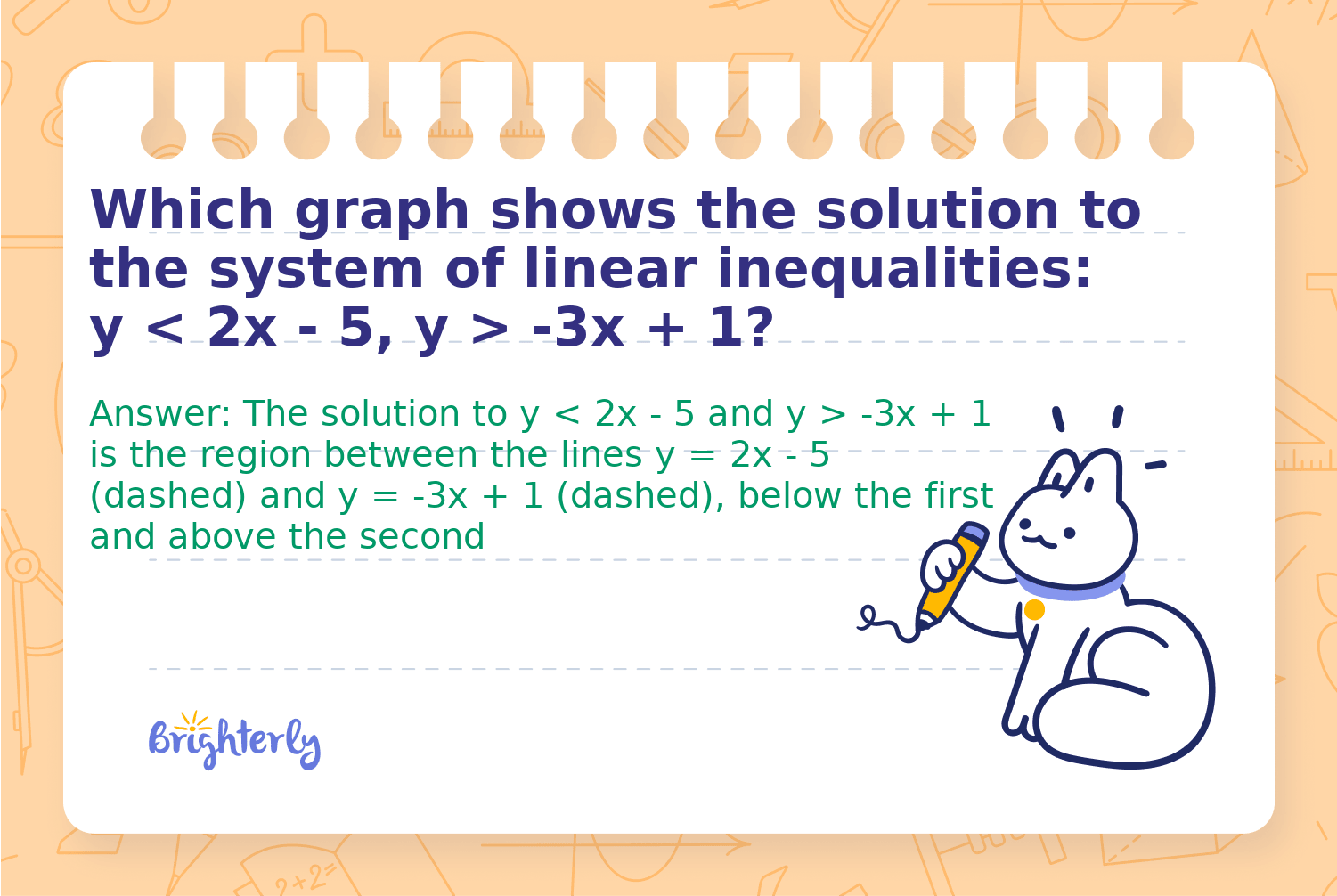
Reviewed by Maila Caliao
Which graph shows the solution to the system of linear inequalities: y < 2x - 5, y > -3x + 1?
Answer: The solution to y < 2x - 5 and y > -3x + 1 is the region between the lines y = 2x - 5 (dashed) and y = -3x + 1 (dashed), below the first and above the second
A system of linear inequalities defines a region on the coordinate plane where the solutions to all inequalities overlap. For the given system, you are searching for the area that is both below the line y = 2x - 5 and above the line y = -3x + 1. These regions are often shaded between two lines, with dashed lines indicating the boundary is not included in the solutions.
Methods
Math Tutor Explanation Using the Graphing Method
Both inequalities can be graphed as straight lines, and then shading indicates the solution regions. Intersection of the correct shaded regions is the answer.
Step 1: Step 1: Draw the boundary lines y = 2x - 5 and y = -3x + 1 as dashed lines on the coordinate plane
Step 2: Step 2: Shade the region below y = 2x - 5 to represent y < 2x - 5
Math Tutor Explanation Using Test Points
A good way to confirm your shaded region is correct is by plugging in test points to each inequality.
Step 1: Step 1: Pick a point in the overlapped shaded region, such as (0,0)
Step 2: Step 2: Substitute x and y into both inequalities to verify the point satisfies both
Step 1:
Step 2:
Math Tutor suggests: Dive Deeper into Systems of Linear Inequalities and Graphs
Continue practicing your understanding of graphing systems of inequalities and related algebraic concepts with these exercises.
FAQ on Solving and Graphing Systems of Linear Inequalities
Why are the boundary lines dashed in the graph?
Because the inequalities are strict (< and >), which means points on the line are not included in the solution.
What does the overlapping shaded region represent?
It shows all possible (x, y) pairs that satisfy both inequalities simultaneously.
Can a system of inequalities have no solution?
Yes, if the shaded regions do not overlap, there is no solution to the system.
How do I shade the correct sides of the lines?
Choose a test point not on the line (often (0,0)), plug it into the inequality, and shade the side where the inequality holds true.
What if the inequalities are '≤' or '≥' instead?
Then use a solid line for the boundary, which means points on the line are included in the solution.

